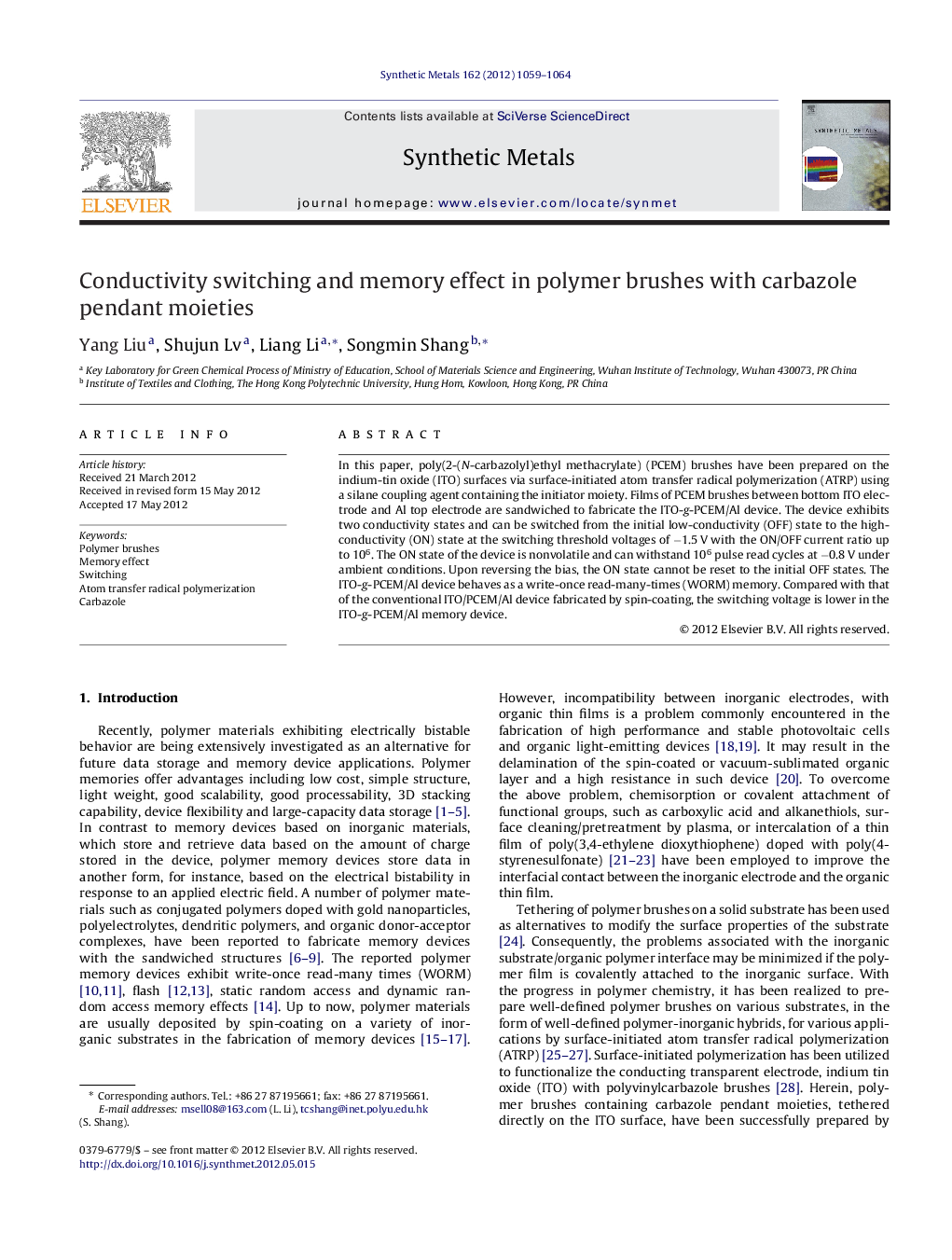| Article ID | Journal | Published Year | Pages | File Type |
|---|---|---|---|---|
| 1441648 | Synthetic Metals | 2012 | 6 Pages |
In this paper, poly(2-(N-carbazolyl)ethyl methacrylate) (PCEM) brushes have been prepared on the indium-tin oxide (ITO) surfaces via surface-initiated atom transfer radical polymerization (ATRP) using a silane coupling agent containing the initiator moiety. Films of PCEM brushes between bottom ITO electrode and Al top electrode are sandwiched to fabricate the ITO-g-PCEM/Al device. The device exhibits two conductivity states and can be switched from the initial low-conductivity (OFF) state to the high-conductivity (ON) state at the switching threshold voltages of −1.5 V with the ON/OFF current ratio up to 106. The ON state of the device is nonvolatile and can withstand 106 pulse read cycles at −0.8 V under ambient conditions. Upon reversing the bias, the ON state cannot be reset to the initial OFF states. The ITO-g-PCEM/Al device behaves as a write-once read-many-times (WORM) memory. Compared with that of the conventional ITO/PCEM/Al device fabricated by spin-coating, the switching voltage is lower in the ITO-g-PCEM/Al memory device.
► PCEM brushes are prepared on ITO surfaces via surface-initiated ATRP. ► ITO-g-PCEM/Al device is switched from OFF state to ON state at threshold voltage. ► ITO-g-PCEM/Al device behaves as a write-once read-many-times memory.
